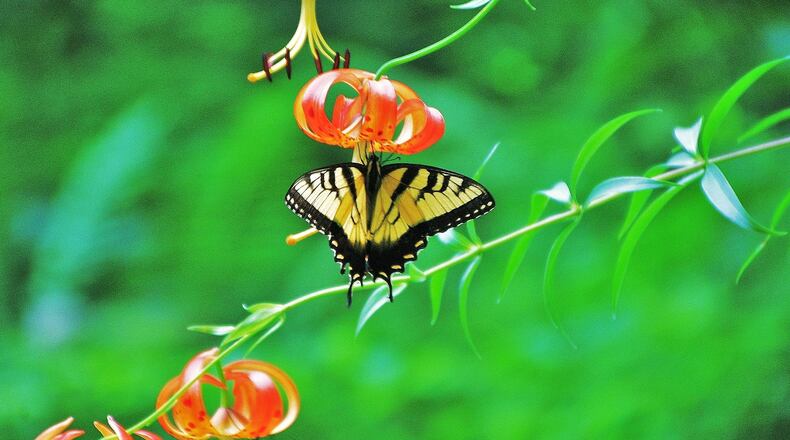We’re “knee-deep in June,” as poet James Whitcomb Riley wrote in his beautiful, pastoral poem celebrating nature’s joys midway through the glorious month of June.
“Ever’thing you hear and see / Got some sort o’ interest,” Riley said of this time of year.
For me, knee-deep in June means a wonderful time to be alive and aware. There’s plenty of sunlight now. Six months ago, we had only nine hours of sunlight; now we have 15. And the year’s longest day is just ahead: It will be on Thursday, also the first day of summer, which arrives at 4:51 p.m. on that day.
The moon will be full the next day — the Strawberry Moon, as June’s full moon is called. Riley noted in his poem that June is ‘‘’bout the time strawberries melts on the vine.” Sky watchers say that this month’s full moon will be unusual since it will be the lowest full moon we’ve seen in years — and therefore may appear larger than usual.
Knee-deep in June in Georgia’s wild places also means:
• Loggerhead sea turtle nesting is in full swing on the state’s barrier island beaches. So far this season, 1,010 nests have been located by turtle patrols.
• Alligators are building nests in preparation for egg-laying in the Okefenokee Swamp and other South Georgia wetlands. This is prime nesting time for Georgia’s state reptile, the gopher tortoise. Freshwater turtles, such as painted, snapping, Eastern box and slider turtles, are crawling about to lay eggs. Chorus, green tree, pig, carpenter, bull and other summer-breeding frogs can be heard during the evenings.
• Butterflies, fireflies and dragonflies are flitting about. Most of the droning now is from bees and other insects. Soon, though, the dog-day cicadas will start their monotonous “song of summer” droning.
• Songbirds are still singing. Migratory birds, such as warblers, tanagers and thrushes, are rearing babies. Year-round birds, such as cardinals, bluebirds and Carolina wrens, are raising second broods of the year.
• This is peak time for white-tailed deer giving birth to fawns.
• Turk’s-cap lily, Queen Anne’s lace, trumpet creeper and other summer wildflowers are blooming along roadsides.
IN THE SKY: From David Dundee, Tellus Science Museum astronomer: Mars and Mercury are in the east just before sunrise. Saturn rises in the east about three hours before sunrise.
Charles Seabrook can be reached at charles.seabrook@yahoo.com.
About the Author
Keep Reading
The Latest
Featured


